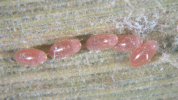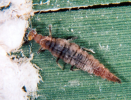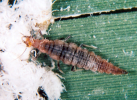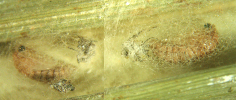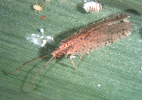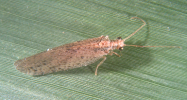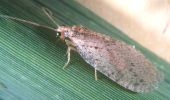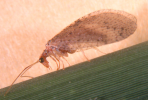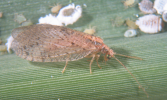 |
|
Hemerobiids, commonly known as brown lacewings, are important predators of aphids and other insects. The potential of hemerobiids in applied biological control has not been studied in depth except in few species. They can be recognised by the following combination of characters:
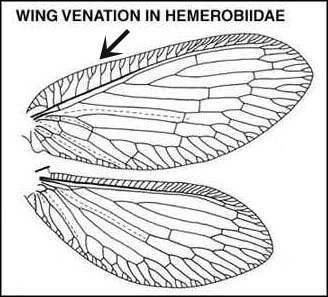 Most of the common hemerobiids are brown or greyish and can be easily recognised, but some such as Notiobiella spp. are pale green and very similar in appearance to chrysopids and easily mistaken for chrysopids. Very few species have been utilised in applied biological control. Micromus igorotus Banks has been found to be a very effective predator of the sugarcane woolly aphid, Ceratovacuna lanigera Zehntner, in southern India. |
 |
Scientific nameMicromus igorotus (Banks)
Taxonomic positionNeuroptera: Hemerobiidae
DiagnosisThis species has been reported to be quite abundant and appears to be a potential candidate for augmentative biological control of the aphid (Lingappa et al., 2004). This species feeds on the first and second instars of C. lanigera and occurs even when the pest densities are low. The predator completes its life cycle in about 25 days. The larvae have three instars spanning about 5-7 days. Larvae and adults have a feeding potential of 20-25 aphids / day. Fecundity ranged from 110 to 170 over a period of 16-18 days (Lingappa et al., 2004).
ImagesSelected references
|
